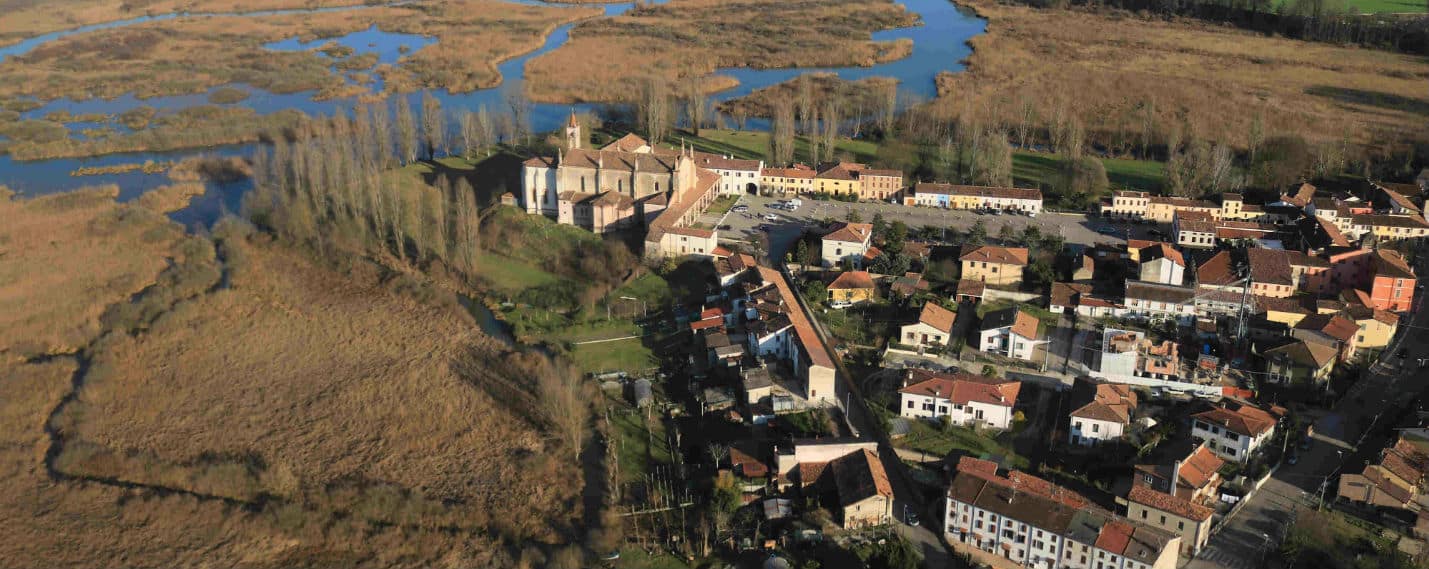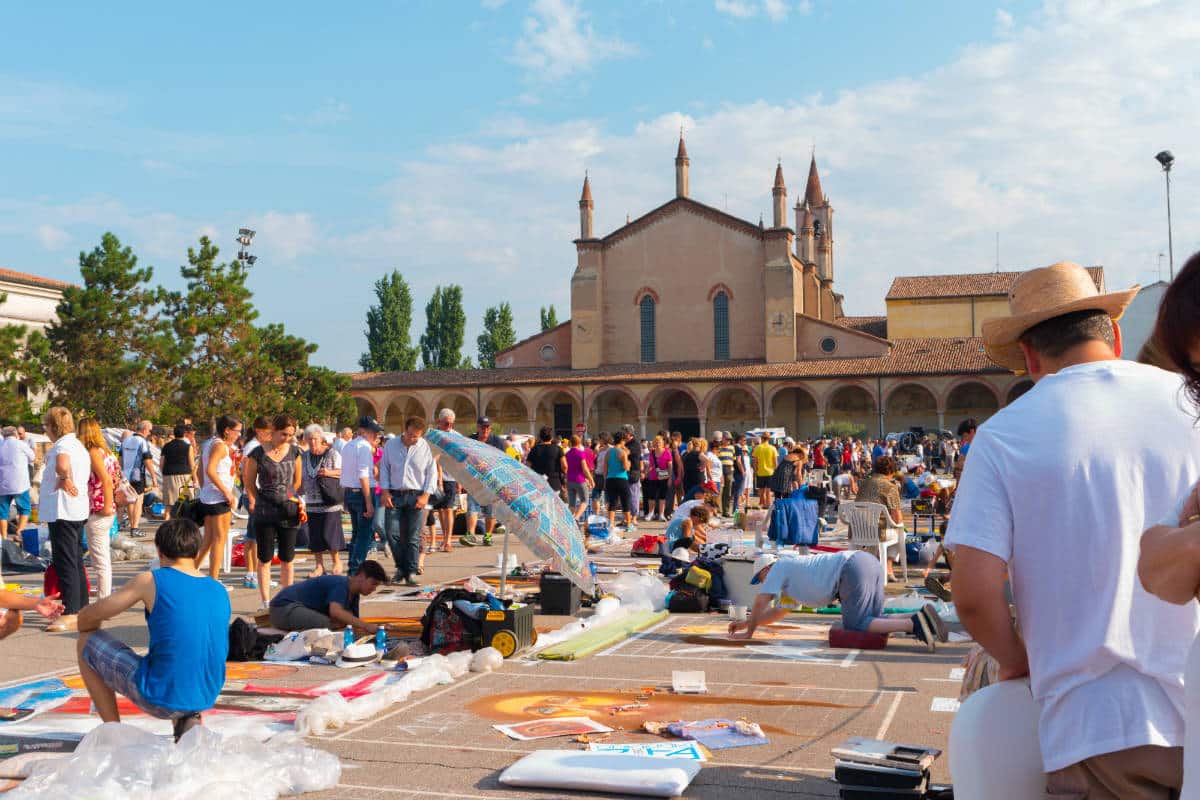The sanctuary of the Beata Vergine delle Grazie is a church of Lombard Gothic style and is located in the small village of Grazie. Built on a large square, the basilica overlooks and overlooks the marshy waters of the River Mincio creating an evocative atmosphere for the numerous delegations of tourists and faithful devotion to the Madonna.
The origins of the church are to delineate even in 1200. In the locality, then call Prato Lamberto, on a small promontory emerging from a maze of flora and lacustrine barrels, stood a altarino with the image of the Madonna and Child in which the fishermen of the lake and the peasants were particularly devoted. The devotion of the people of the area was old and well established, in those times the lake environment was yes source of income but also of heavy work, hardships and diseases, superstitions and fears, the strength of faith was therefore of comfort and Christian was only subsequent to that pagan front. From the small altar in the course of the years, was built a small chapel with a votive chapel to protect the sacred image from the weather. With the growth of the architectural structure grew even the interest for this miraculous image, spreading his fame throughout the territory bordering. Toward the end of the XIV century, for the grace received, Francesco Gonzaga erected a temple to the Madonna that had stopped the epidemic of plague that struck the Mantovani.
From 1412 until the end of the century were built the convent, the school, the oratory, the library, until in 1521 rose around the piazzale a porch of 52 arches to the shelter of the merchants since 11 August 1425 the Marquis Federico Gonzaga had moved the “fiera di Porto” starting with the tradition of the Fiera di Ferragosto alle Grazie. During the First War of Independence against Austria 1848, here did field the troops of the Grand Duchy of Tuscany before going to the famous Battle of Curtatone and Montanara. Following the Battle of Goito of 30 May 1848 the troops of the Kingdom of Sardinia went into the country. King Carlo Alberto was curious to visit the Shrine as intended to observe the manikins present inside. However when the army arrived at the entry found the doors closed. They heard only after that the inside of the sanctuary the citizens had brought about a hundred wounded of the Austrian army and that, scared, wanted to hide them from view of the Sardinian army. The General Eusebio Bava motivated the gesture with the “tendency toward the imperial cause” of the inhabitants of the country.
The dummies were realized with the technique of the papier-size (allocated for the most part a Friar Francis from Acquanegra) and the same poor material is thought also manufactured garments and the plates which cover them and helmets and weapons that they end up. As regards the clothes, it was discovered it was pieces of cotton fabric applied to the statues with hooks, dating back to the end of the nineteenth century because of industrial manufacture. Twelve are the plates that have been reassembled by various statues. In fact, studies it was found that six of these have origin well most noble of believed. It is in fact defensive armor in gothic style Italian-made in 1400, are complete that lined completely the knight because they consist of various elements of the steel which were being composed harmonically ensuring effective protection.
The presence of all particular, impresses the visitor enters in the Shrine, a crocodile (Crocodilus niloticus) embalmed is hung from the ceiling to the center of the nave. In antiquity were seen with promiscuity figures of dragons, crocodiles or snakes and often in christian age, were associated with evil, considered earthly personifications of the devil, animals which induce to sin.
The placement of these animals in the churches has therefore a strong symbolic significance, as they were in the medieval churches the location of prehistoric fossils, then chained the animal at the top, in the vault of the Church means make it harmless, lock the evil that represents and at the same time exposing a warning concrete for the faithful against the human error susceptibility.
Linked to the crocodile of thanks and its derivation are born different legends and theories, there is someone who gives his escape from a zoo exotic private house Gonzaga, who has drafted tales closer to the miraculous nature of the event: two brothers boatmen were resting on the bank of the river, a stretch one of the two was attacked by the crocodile. The other, asking the divine intercession, you armò of knife and managed to kill the predator. Were also assumed other meanings and connections (even among other architectural structures – symbolisms present in the church and the verses on the Apocalypse) well more elaborate you think referable to the Franciscan Friars Minor (Guardians of the Church precisely during the century in which was exposed the relic of the crocodile) and mediaeval alchemy that have implemented.



